




Statewide government advocacy is one of the core member services provided by the American Institute of Architects New York State (AIANYS). The need to organize a representative and influential voice was a driving force behind the founding of the American Institute of Architects (AIA) in 1857 by Richard Upjohn in New York City. Communicating the impact of state policy on the profession of architecture and the associated efforts of AIANYS to influence the public policymaking process, is essential to creating an informed and engaged membership.
It is our hope that this quarterly newsletter will provide a medium to spotlight AIANYS government advocacy efforts and present a unique perspective of public policymaking in New York through the lens of the architectural profession.
AIANYS volunteers and staff work tirelessly on behalf of the profession to advance the interests of members and elevate the profession in the eyes of all New Yorkers. Much of this work is performed behind-the-scenes and is so ingrained in the culture of the organization that the daily grind never makes it to print. Only those volunteers serving in a position of leadership or on a committee are truly immersed and aware of the breadth of issues, threats, and opportunities facing the profession on the policy front.
This publication is meant to bridge the knowledge gap and expand member understanding of AIANYS government advocacy efforts and illustrate the impact of state policymaking on the profession and the built environment. As this publication grows and matures, we will invite members, public policymakers, and other subject matter experts to contribute content to help broaden the spectrum of voices.
We hope you find this first issue of Capitol Columns valuable, and those issues to come.
Very truly yours,

 Paul McDonnell, AIA President
Giuseppe Anzalone, AIA Vice President/Government Advocacy
Willy Zambrano, AIA President-Elect Legislative Counsel Whiteman, Osterman & Hanna LLP
Michael Burridge Director of Government Affairs
Georgi Ann Bailey, CAE, Hon. AIA Executive Vice President
Richard Leckerling, Esq., Partner
Paul McDonnell, AIA President
Giuseppe Anzalone, AIA Vice President/Government Advocacy
Willy Zambrano, AIA President-Elect Legislative Counsel Whiteman, Osterman & Hanna LLP
Michael Burridge Director of Government Affairs
Georgi Ann Bailey, CAE, Hon. AIA Executive Vice President
Richard Leckerling, Esq., Partner

 Katherine Herlihy, Esq., Partner Agnes Leahy, Director of Legislative Research
Katherine Herlihy, Esq., Partner Agnes Leahy, Director of Legislative Research
In June of 2022, the National Council of Architectural Registration Boards (NCARB) announced its intent to provide two optional accommodations targeted to assist English as a second language (ESL) candidates seeking to take the Architect Registration Examination (ARE®). These accommodations include:
attracting talent from every corner of the globe. The failure to adopt these ESL accommodations would impair efforts to diversify and expand the profession, exacerbate economic and social inequalities, open the profession up to claims of facilitating barriers to the labor market, and make New York less competitive relative to other U.S. jurisdictions.
20% additional time on the exam
The use of a printed word-for-word translation dictionary.
Post-announcement, NCARB informed AIANYS that New York was the only U.S. jurisdiction where these accommodations would be prohibited based on an English proficiency regulation applicable to the licensed professions under the purview of the State Education Department (SED).
New York’s prohibition of these ESL accommodations presented an obvious disadvantage for eligible candidates relative to other jurisdictions, at a time when the state identified 10% of students as English as a second language learners. Further, the implications for license reciprocity/endorsement were profound. For instance, if an ARE® candidate opted to use the ESL accommodation to take the exam in another jurisdiction, New York would not accept the test scores due to the use of the accommodation, and the candidate would have to retake the exam without the accommodation to become licensed in New York.
Why did this pose such a threat? According to NYSED’s Office of the Professions statistics,
of architectural licenses in New York are held by architects living in another U.S. jurisdiction or outside the country.
The number of domestic, out-of-state, and foreign architectural licensees helps bolster design capacity in New York and is the reason it is rapidly gaining on California as the state with the most registered architects in the country. New York is home to some of the most successful architectural firms in the world,
To meet this challenge, AIANYS embarked on a campaign to highlight the importance of the ESL accommodations to the future of the profession. Over the course of nine months, AIANYS leveraged data gathered from NCARB and recruited first and second-generation architects to appeal to the Board of Regents and SED leadership. These efforts ultimately paid dividends, as AIANYS was informed in April that the Board of Regents would be considering an emergency regulation to authorize the use of the ESL accommodations for ARE® candidates.
On May 16, the NYS Board of Regents approved an emergency regulation to authorize the use of the ESL accommodations for ARE® candidates. This monumental action by the Board of Regents not only secured a victory for the architectural profession, it provoked genuine acclaim from some of the Regents, who commended the profession for its drive to enhance diversity and expressed hope that other professions would follow in its path. The glowing statements made by the Board of Regents are a testament to the hard work, dedication, and motivation of members to pursue change for the betterment of all.
The emergency regulation is temporary, and it will be incumbent upon the Board of Regents to renew the regulation in July. If the emergency regulation is extended as expected, the Board will vote on a permanent regulation in September. AIANYS will be providing comments during the public comment period and encourage members to add their voice by e-mailing SED at REGCOMMENTS@nysed.gov.
In February of 2023, NCARB announced it was retiring the ARE® rolling clock policy and replacing it with a new score validity policy, effective May 1, 2023. Under this new policy, passed ARE® divisions from both the current and prior versions of the exam will become valid. The change in policy will reinstate the validity of all passed ARE® 4.0 divisions taken between 2008 and 2018. For current ARE® candidates, the validity of the 5.0 divisions will be extended through the next iteration of the exam, effectively extending their score validity for at least 10 years.
Unfortunately, 14 U.S. jurisdictions have statutory or regulatory impediments preventing the implementation of the transition to the score validity policy—New York being one. Already locked in negotiations over the ESL accommodations, AIANYS was aided
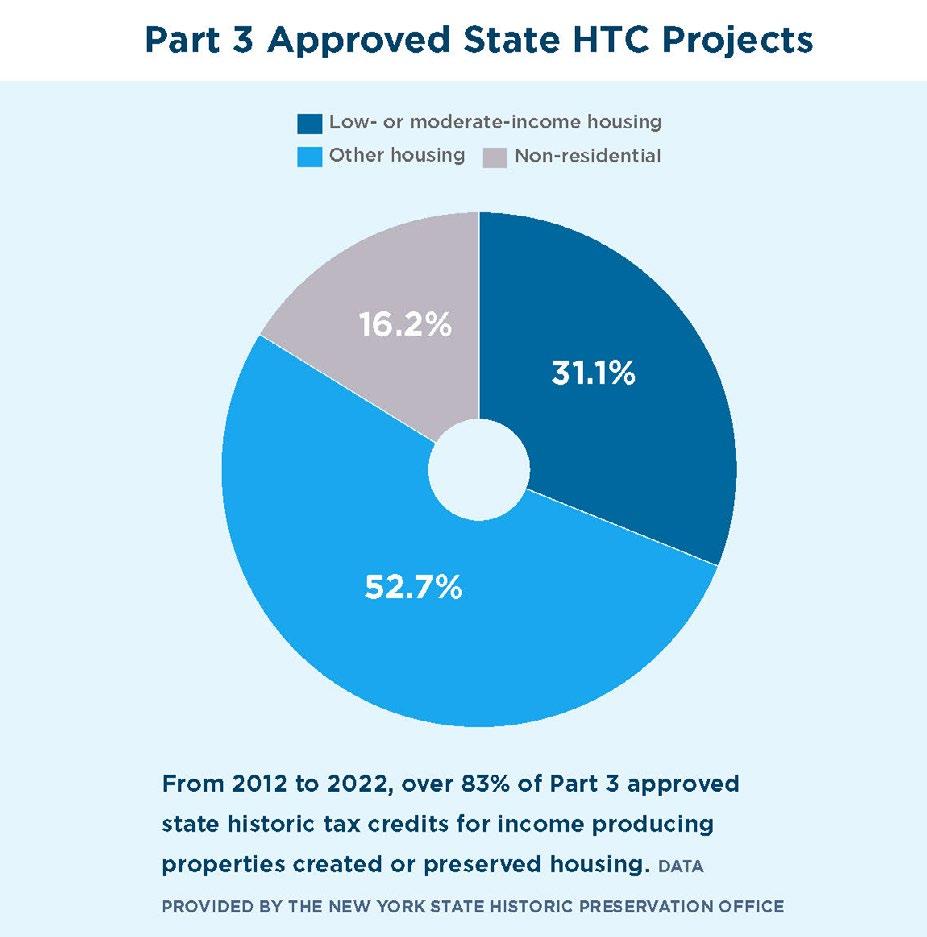
by the AIA Stop the Clock Campaign, which generated numerous e-mails to the New York State Education Department (SED) in support of the policy change. Advocacy at the national level, combined with AIANYS efforts on ESL accommodations, set the stage for the package of emergency regulations proposed by SED.

The NYS Board of Regents approval of both the ESL accommodations and the new score validity policy propelled New York to the position as the first state in the country to overcome the statutory and regulatory hurdles preventing adoption. Faced with two major and unprecedented regulatory challenges, AIANYS and its members rose to meet these challenges and effect positive change. ARE® candidates in New York will now be able to take advantage of the ESL accommodations, seize the opportunity to restore past test scores, and continue their path to licensure.
Analogous to the emergency regulation for the ESL accommodations, the adoption of the score validity policy is a temporary regulatory solution. We encourage members to voice their support for making the regulation permanent by contacting SED at REGCOMMENTS@nysed.gov.
AIANYS joined with the Preservation League of New York State to support a long-term extension of the State Historic Preservation Tax credit. While the original goal was an extension to 2032, an extension to January 1, 2030, was
included in the final 2023-24 State budget. A six-year extension of the credit will help provide developers with a sense of continuity and encourage investments to preserve and repurpose the state’s historic treasures.
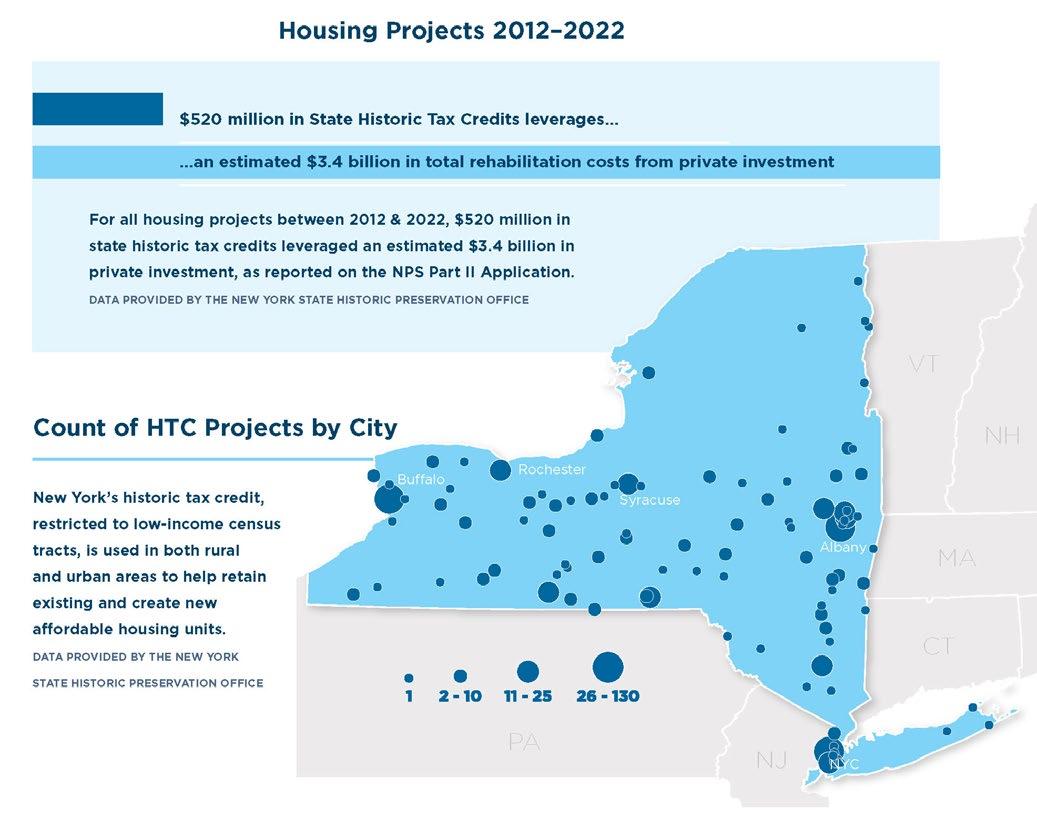
On October 19, 2018, the AIA Committee on Architecture for Education convened a summit of architects, policymakers, students, educators, school administrators, law enforcement, building code officials, and mental health experts to examine violence in schools and explore ways to improve school safety and security through design of the built environment. This summit led to several recommendations, one being the creation of a central repository of resources and best practices for schools nationwide. As a direct result of AIA advocacy, this repository was included in the federal Bi-Partisan Safer Communities Act; specifically contained in the Luke and Alex School Safety Act.
Signed into law in June of 2022, the Safe Communities Act directs the Department of Homeland Security to maintain a repository of resources to help make schools safer and directs the U.S Department of Education to alert school districts to these resources.
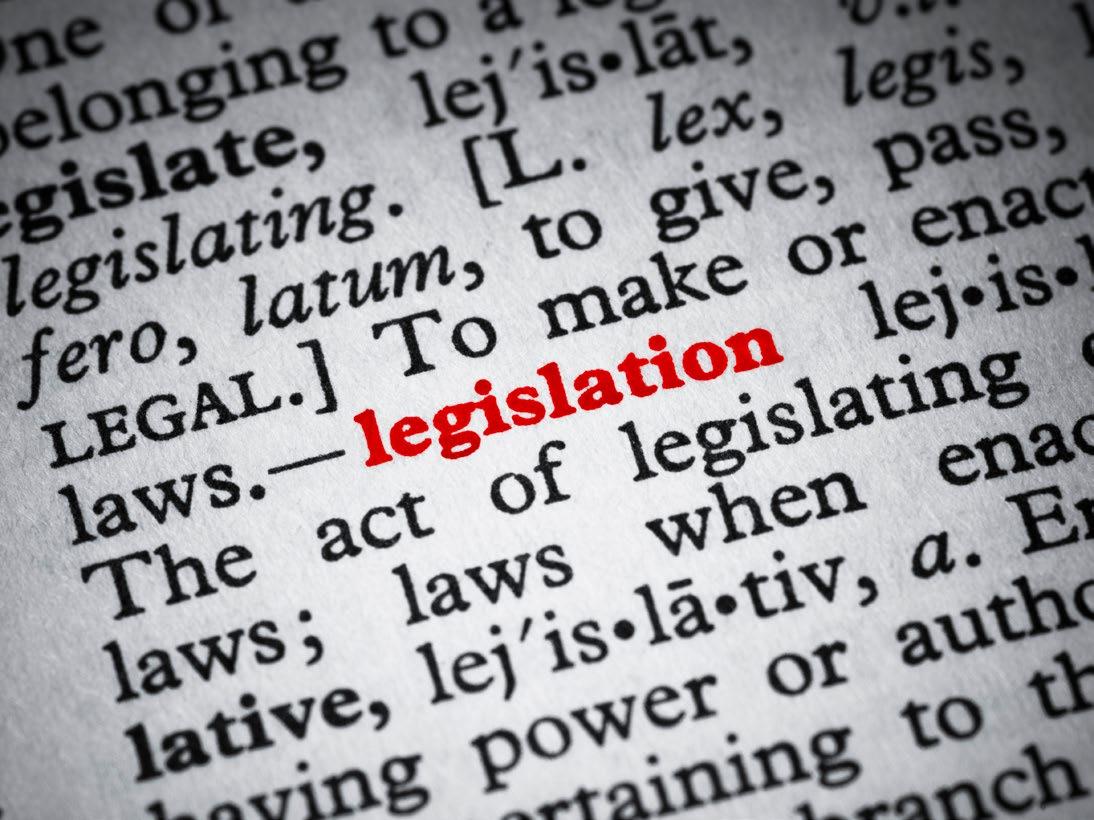
To aid AIA efforts at the federal level, AIANYS drafted an in-house piece of legislation, the Safe Schools by Design Act (A.286-A Paulin/S.2629-A May), to ensure schools make a good faith effort to incorporate these best practices as part of their five-year capital planning process. Further, the bill expands the categories of funding for the New York State School Violence Safety Grant to include funding for programs which facilitate and promote community involvement in school facility planning, such as design charrettes and the community-focused design approach used in the process to design the new Sandy Hook Elementary School in Newtown, CT.
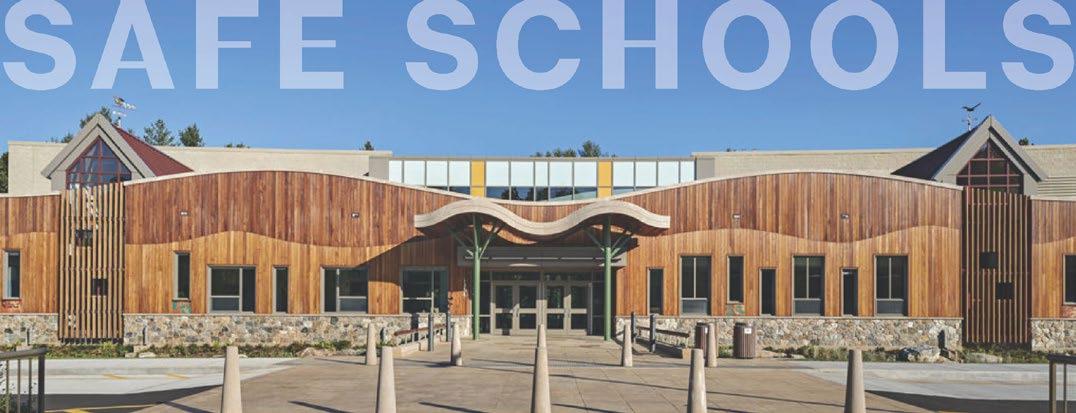
After three years of advocacy, and the determination of the sponsors Assemblymember Amy Paulin (AD 88-Westchester) and Senator Rachel May (SD 48-Syracuse), the Safe Schools by Design Act unanimously passed both houses of the NYS Legislature. The Safe Schools by Design Act will be transmitted to the governor for final action in the coming months. Once delivered, we will call on members to write letters in support of the bill to help ensure it’s signed into law.
The passage of the Safe School by Design Act underscores the importance of collaborative advocacy at the federal, state, and local levels. Together, we may continue to uphold and advance the universal and inescapable importance of design as a solution to some of society’s most pressing problems.
proponents framed the bill as a means to address building permit backlogs.
For the past few years AIANYS has grappled with a poorly drafted bill (A.4202-A /S.5614-A) aimed at expanding the use of professional certification programs in New York state. Initially proposed as a statewide bill, the scope was whittled down to local governments on Long Island and the City of Yonkers. Comprised predominantly of prodevelopment and business groups from Long Island, the
While AIANYS supports polices to eliminate unnecessary time delays in the permitting process, the bill in question is overly broad, ill-defined, and deficient in key areas to the point its passage would most likely harm the public, owners, and licensed architects and engineers. AIANYS spent months working with members on amendments to help provide a sensible way forward. When it became apparent that the legislative sponsors did not intend to wait for amendments and commentary, AIANYS issued a memo of opposition to the bill. The decision to oppose the bill after the expenditure of energy to provide alternative solutions was not made lightly, as a special Board of Directors meeting was called to address the matter and adopt the position. Ultimately, the bill ended up being held in both houses and did not advance this year.
AIANYS will take the off-session to continue a dialogue with the bill sponsors and work with the proponents of the bill to address lingering concerns.
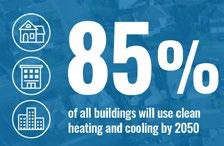
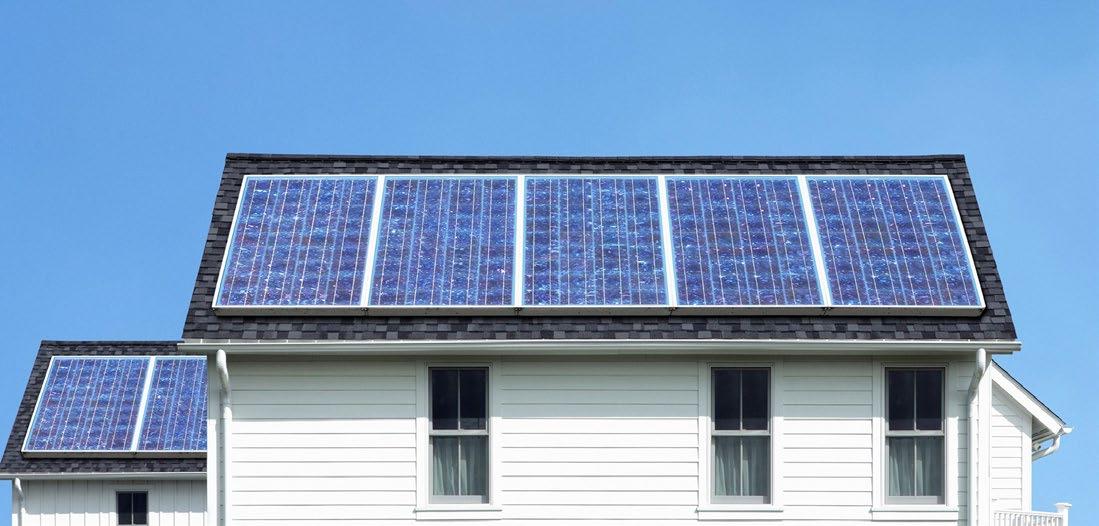
The blockbuster policy proposal of the year was the passage of a scaled-down version of the All-Electric Buildings Act as part of the final State budget. The passage of this law makes New York the first state in the nation to mandate electrification in new buildings. Pursuant to the bill, beginning December 31, 2025, all new buildings under seven floors will be required to be all-electric (except new commercial or industrial buildings over 100,000 sq. ft.), and after December 31, 2028, all buildings will be required to be all-electric. This new law will not affect existing buildings, therefore, any buildings currently using fossil fuel infrastructure or equipment will not be required to transition to all-electric when their fossil fuel infrastructure or equipment has reached its useful life.
The law contains several other exemptions and exclusions including manufacturing facilities, commercial food establishments, laboratories, car washes, hospitals or other medical facilities, critical infrastructure, agricultural buildings, fuel cell systems, and crematoriums. Moving forward, the State Fire Prevention and Building Codes Council will have the authority to grant, extend, or modify exemptions to the law.
In its budget letter to the State Legislature, AIANYS expressed support for building electrification as a means to reduce operational carbon emissions, with recommendations to allow fossil-fuel equipment for back-up and standby power and an exemption if new
The Climate Leadership and Community Protection Act of 2019 (CLCPA) directs the NYS Department of Environmental Conservation (DEC) to promulgate rules and regulations four years after the enactment of the Act.

Therefore, the second half of 2023 will be crucial to the future of climate policy in the state as these draft regulations will be released for public review and comment.
These regulations will include legally enforceable emission limits, performance standards, and touch every sector of the economy.
or expanded electric service could not be provided by the public utility. Both recommendations were included in the final version of the law and should help enhance resiliency and flexibility to achieve compliance.
Regardless of these exemptions, buildings in the exempt class will still be required to minimize emissions and limit fossil fuel use to portions of a building where electrification is infeasible. Those portions of a new building authorized to use fossil fuel must be electric-ready, unless the building is used for agricultural, manufacturing, or industrial processes. AIANYS will continue to monitor and provide updates on the implementation of this new law and is looking to collaborate with NYSERDA on an educational webinar for members this Fall.
AIANYS engagement in this regulatory process will be crucial to ensure the voice of the architectural community is heard.
Beyond the drafting of regulations by the DEC, the State Fire Prevention and Building Codes Council will be faced with the monumental task of developing and adopting codes to comply with the decarbonization goals set forth in the CLCPA, the Advanced Building Codes and Appliance Equipment Standards of 2022, enhanced standards for buildings in a FEMA floodplain, and the rulemaking process required as part of the All-Electric Buildings Act. These statutory changes direct the Code Council to draft regulations related to high-performance envelopes, on-site energy storage and generation, electric-readiness, grid interactivity with electric appliances, the elimination of barriers to the residential adoption and use of ground-source heat pumps, and the prohibition of fossilfuel equipment in most new buildings.
For more information on the code development process and to participate in the conversation, please visit the State Fire Prevention and Building Code website at: https://dos.ny.gov/state-fireprevention-and-building-code-council
production should be a top priority for all New Yorkers and required collaborative solutions steeped in data-driven analysis and supportive of local conditions and character.
Excerpts from the letter read,
“AIANYS believes governmental policies, programs, and incentives to promote the design, construction, renovation, rehabilitation, preservation, and stabilization of safe, healthy, and affordable housing is a top priority…
The 2023 Legislative Session appeared destined for a breakthrough on housing policy in New York after the governor unveiled her plan to produce 800,000 housing units over the next decade. Under Governor Kathy Hocul’s Housing Compact, local jurisdictions across the state would be assigned a triennial housing growth target, coupled with alternative compliance pathways based on preferential zoning and land-use changes. The preferential actions included local adoption of policies to authorize the creation of more accessory dwelling units (ADUs), lot splits, increased density, removal of restrictive zoning, and rezoning commercial areas for residential or mixed-use. Included in the Housing Compact was the Transit-Oriented Development Act of 2023. This Act would create a tiered framework to increase density near rail stations governed by their proximity to NYC.
The teeth of the Housing Compact were embedded in the creation of a new fast track housing court, with the authority to penalize local jurisdictions failing to meet growth targets or adopt some of the preferential actions. Moreover, the Compact would authorize the State to override local zoning and land use authority to compel non-compliant local governments to build more affordable housing. The TOD Act took a similar approach, authorizing the State to force the creation of new housing in these areas, and providing a right-to-action for developers seeking permit approval for housing. Heavy on the stick, light on the carrot, these provisions stoked fierce backlash from suburban and rural legislators in both parties, prompting the Assembly and Senate to jettison the governor’s plan from their one-house budget response, and replace it with their own incentive laden housing plan.
In response to the governor’s proposal, the AIANYS Government Advocacy Committee (GAC) drafted and sent a letter to legislators serving on the Assembly Ways & Means Committee and the Senate Finance Committee outlining the organization’s position on housing and the various proposals. It was made abundantly clear in the letter that new affordable housing
AIANYS recommends pursuing a course whereby the State works in partnership with local governments, provides model guidance and laws related to best practice land use and zoning ordinances, and incentives to local governments to comprehensively study timely, sensitive, and equitable affordable housing.

Ultimately, the housing negotiations were so contentious and deleterious that even the minor housing proposals, such as allowing NYC to raise the floor area ratio (FAR) cap, re-authorize the 421-a affordable housing tax rebate, and providing a path to legalize non-compliant basement apartments, were dropped as well. Tensions carried over into the post-budget portion of session, tainting three-way negotiations on several highprofile policy initiatives. The death knell to housing policy was punctuated by a joint press release sent near the close of session by the Assembly Speaker and Senate President Pro-Temp, announcing the breakdown of housing and tenant protection negotiations with the governor.
Hope for a grand deal on housing next year is already being overshadowed by the 2024 election cycle, which will determine control of the White House, the U.S.
Congress, and the State Legislature. As the election draws closer, suburban lawmakers may be wary to support measures that will be used as political fodder, such as a prohibition on restrictive local zoning and land use ordinances, which has been used in campaign ads as a ban on “single-family zoning,” and in more hyperbolic terms the “death of the suburbs.” Regardless of resistance from suburbia, State legislators should be looking at measures to provide urban areas and other localities interested in housing production, TOD, sustainable development, and smart growth, with the resources to accomplish these goals. The failure to act on housing threatens the vitality of the economy and imposes an artificial ceiling on the State’s ability to maintain relevancy and stem the outmigration of New Yorkers looking for jobs and livable communities.
7,500+
bills introduced in the State Legislature

449 896
bills passing both houses in 2023
number of AIANYS legislative/executive agency communications
405
bills being tracked by AIANYS